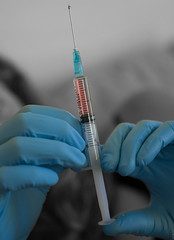 Judge Irene Sullivan is a well known figure in Florida and nationally when it comes to the subject of juvenile justice. A retired judge she is currently an adjunct professor at Stetson University College of Law and has been the juvenile track leader for circuit judge’s education.
Judge Irene Sullivan is a well known figure in Florida and nationally when it comes to the subject of juvenile justice. A retired judge she is currently an adjunct professor at Stetson University College of Law and has been the juvenile track leader for circuit judge’s education.
For more information about Judge Sullivan please see her full bio at the end of this interview. The number of task forces she is on is truly stunning! But now, on with the interview!
HE: What drew you to working with juvenile justice in the beginning? Was it the focus of your work as a trial lawyer or was it something that began after you attained the judiciary?
IS: I’d never done any juvenile or criminal work as a trial lawyer. When elected to the bench in 1998, I was assigned to family law, i.e. divorces, domestic violence, etc. After three years, I was asked to move to our newly-created Unified Family Court, where I would serve as a juvenile judge handling both dependency (child abuse, abandonment, neglect) cases and delinquency, as well as related family law matters of the parents or guardians of the kids who appeared before us. It was an experimental court and I jumped at the opportunity to serve in a “one family, one judge” model, which I did for nine years. I enjoyed the kids the most, even the delinquent ones!
HE: Would you be kind enough to tell us a bit about your visit to Umatilla Academy for Girls and how it influenced your stance and actions since then?
IS: Umatilla Academy for Girls was a residential program for high risk girls located in a former children’s hospital in a small central Florida town. Not long after becoming a juvenile judge, I visited the program as three of the girls from our circuit had been sentenced there. I actually wept when I saw the atrocious conditions of the place: dirty walls, dirty sacks for clothing, terrible food, no exercise, girls running wild, screaming inside, and no doors on the toilets or curtains on the showers, despite the presence of male guards. It was awful, and after my findings were confirmed, it was shut down. That experience taught me that kids deserve kind and nurturing treatment everywhere, even when committed, and that people will listen to make that happen.
HE: One hundred years ago the first juvenile courts were created in Chicago, Illinois. Today we find a system in shambles and the effectiveness that was once an example for the rest of the world seems long lost. What factors do you believe brought us from there to here?
IS: Hopefully, we’re slowly returning to more of the old Chicago court juvenile model. For the last 25 years, kids have been treated like adults; we’ve lost focus on prevention, diversion and rehabilitation; legislators run on “tough on crime” platforms that include kids, and public schools have turned into places where a kid first gets arrested. It’s beginning to turn around, especially in states like Florida under the enlightened and inspired leadership of Department of Juvenile Justice Secretary Wansley Walters.
HE: Let’s talk a bit about Evanston High School. Last May you wrote a column for the Juvenile Justice Information Exchange in which you levied high praise on their approach and it’s effectiveness. Now that you’ve had half a year to process the experience would you share a bit about it with our readers?
IS: At Evanston High School just north of Chicago, I became part of a “peace circle” of students, teachers and counselors who shared their deepest fears and desires, and then promoted restorative justice as a better way to deal with school-based infractions. I learned that a “peer jury” could deliver more appropriate sanctions than the court system, for example, having the disruptive student not only apologize to the teacher but show up early for a month to help her organize her classroom, and not have a criminal record. It’s a wonderful program and should be replicated nationwide.
HE: What would you point out as exemplary programs for dealing with juvenile offenders both in Florida and nation- wide? To what do you attribute their success?
IS: Florida is know for its progressive, humane and nurturing girls programming, in and out of residential care, due to the efforts of Dr. Lawanda Ravoira, with the National Center for Girls headquartered in Jacksonville, and Pace Center for Girls, which has 17 alternative schools throughout the state where counseling, education, therapy and mentoring is delivered in a very therapeutic way to at risk girls who have histories of physical, sexual and emotional abuse. Other evidence-based programs throughout the country, such as those run by the Annie E. Casey Foundation and the Robert Wood Johnson Foundation, have revolutionized detention care and juvenile drug treatment. As more dollars are put into prevention and diversion, we are starting to see juvenile jails being closed or consolidated.
HE: What do you espouse as the best means of combating recidivism among juvenile offenders?
IS: Recidivism is a big problem in the re-entry of teenage boys from residential programs back into the community. The best way to reduce it is through a re-entry program designed by Parenting with Love and Limits (PLL),created by Dr. Scott Sells, that brings the family and family counseling into the residential program from the time the juvenile is first committed, and follows the juvenile and family after re-entry into the community, to provide aftercare and prevent recidivism. The PLL program not only works to reduce recidivism, it shortens the length of residential stay as it is based on an “earned release” philosophy. You can’t fix the kid until you fix the family, and that’s what PLL does.
HE: Much like our own Susan Lankford, you also utilize a lot of personal narrative in your book, Raised By The Courts. Did you collect all those stories yourself or were you assisted by other interviewers? How did those interviews change your own perspective on the issue?
IS: The stories in my book, Raised by the Courts: One Judge’s Insight into Juvenile Justice, are all true stories of the kids who appeared before me. Only the names have been changed. I began collecting these stories almost from “day one” on the juvenile bench, when I realized how complicated the lives of these kids were, how much chaos and violence they were exposed to daily, not only on the street but in the home.
HE: What would you say are the three most important things you have learned from your years dealing with these issues from the bench?
IS: The three most important things I learned, out of many, are that kids are not born bad; all kids need love, nurturing and, most important, hope, in their lives, and that a single caring adult can make a big difference in the life of the most hardened child.
HE: Every day it seems like technology progresses by leaps and bounds. What online tools do you think could improve our engagement with at risk youth, or allow us to serve them in a more efficient and cost effective fashion?
IS: I’m not the most computer literate person, that’s for sure, but I think that the internet, laptops, appropriate use of social media, can bring to many at risk kids the sense of connection and hope for the future that is lacking in traditional education and upbringing. I’m optimistic about it, despite the dangers of “sexting,” etc.
HE: Internet rumors are floating around about a new book as a follow up to Raised By The Courts. Is there any substance to them, and if so is there a timeline for publication yet?
IS: Yes, if I can discipline myself to finish it, I have a biography of one of the most abused and mistreated young men in my book in the works, as well as a fictional series based on juvenile court. Sort of like: Law and Order in Juvenile Court!!! Thanks for asking.
HE: Thank you for joining us Judge Sullivan, keep up the good work!
About Irene Sullivan: Judge Sullivan served as a juvenile and family court judge from 1999-2011 in the St. Petersburg/Clearwater area of Florida. Prior to that, she was a general partner at Harris, Barrett, Mann & Dew, L.L.P. in St. Petersburg, Florida, where she had a civil trial practice for 22 years and became an A-V rated trial lawyer.
She obtained a Juris Doctorate degree from Stetson University College of Law, cum laude, and a Bachelor of Science in Journalism, with honors, from Northwestern University’s Medill School of Journalism, in Evanston, Ill.
Judge Sullivan received the following awards: The Florida Network of Youth and Family Services, Inc. Outstanding Community Partner Award; Clearwater and St. Petersburg Bar Associations’ Annual Judicial Appreciation Award; Stetson University College of Law Ben C. Willard Distinguished Alumni Award; Guardian ad Litem Community Advocate Award; Florida Association of School Social Workers’ Diamond Award; Salvation Army’s Children’s Justice Award; Pinellas Enrichment Through Mental Health Services (PEMHS) P.A.C.E. Award; Family Resource’s Family Advocate Award; Community Action Stops Abuse (CASA) Domestic Violence Champion Sponsor Award.
She has presented at many conferences and seminars involving juvenile crime, the importance of prevention and diversion, truancy, domestic violence and mental health issues for juveniles. In February, 2011, she was a keynote speaker at the Adolescent Conference sponsored by the Florida Juvenile Justice Association and the Florida Alcohol & Drug Abuse Association, where every registrant received a copy of her book, Raised by the Courts: One Judge’s Insight into Juvenile Justice, released by Kaplan Publishing Co. in November, 2010.
She currently sits on the following boards or task forces: The American Bar Association’s Commission on Youth At Risk; The Ounce of Prevention of Florida, Inc., PACE for girls, state and local; The Pinellas Community Foundation, The InterCultural Advocacy Institute; Florida Disproportionate Minority Contact Task Force; Blueprint Commission to Reform Juvenile Justice, and the Juvenile Indigent Defense Action Network at Barry University Law School, funded by the MacArthur Foundation. She’s an adjunct professor at Stetson University College of Law and has been the juvenile track leader for circuit judge’s education.



 Judge Irene Sullivan is a well known figure in Florida and nationally when it comes to the subject of juvenile justice. A retired judge she is currently an adjunct professor at Stetson University College of Law and has been the juvenile track leader for circuit judge’s education.
Judge Irene Sullivan is a well known figure in Florida and nationally when it comes to the subject of juvenile justice. A retired judge she is currently an adjunct professor at Stetson University College of Law and has been the juvenile track leader for circuit judge’s education.












